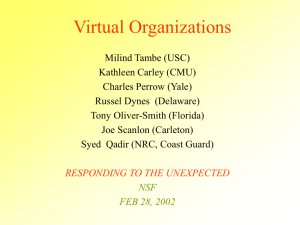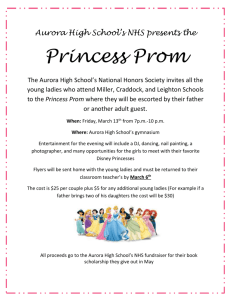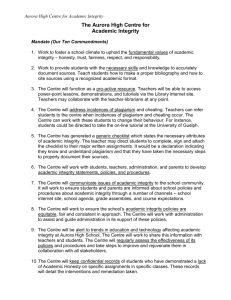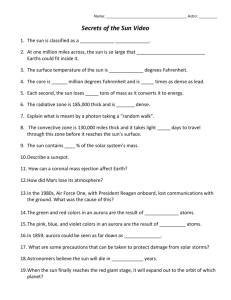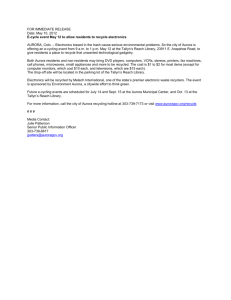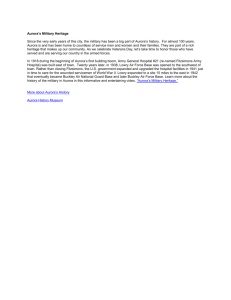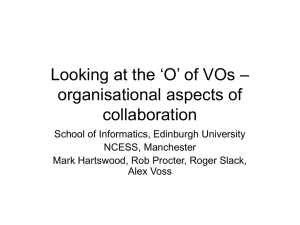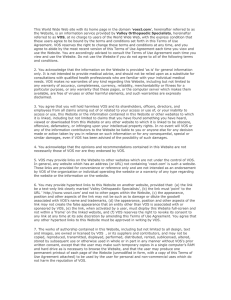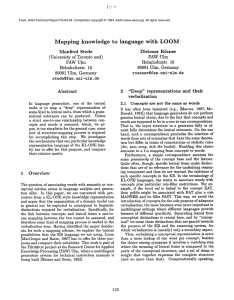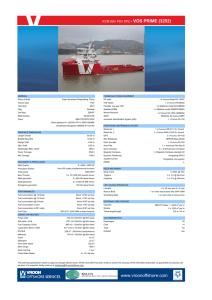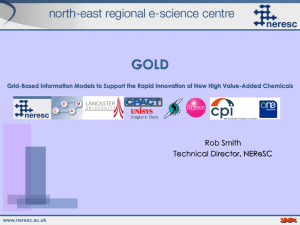A Plague of Too Much Data? Challenges and Opportunities... Using Authentic Data in the Classroom Emily CoBabe-Ammann
advertisement
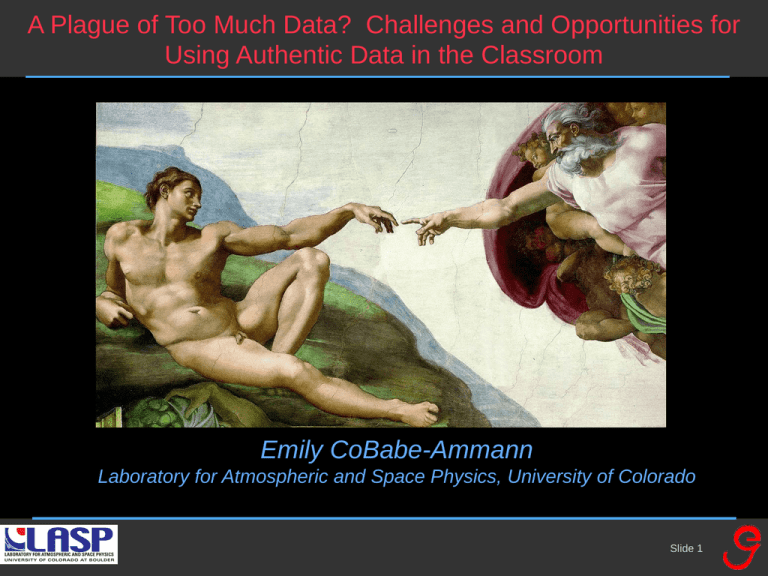
A Plague of Too Much Data? Challenges and Opportunities for Using Authentic Data in the Classroom Emily CoBabe-Ammann Laboratory for Atmospheric and Space Physics, University of Colorado Slide 1 Data has Lots of Audiences More Strategic Less Strategic From “Why EPO?”, a NASA internal report on science education, 2005 Slide 2 Why is Data Important in Science Education? Data is a critical component for understanding how science works. With it, we can: o Design and conduct scientific investigations o Understand the quality of data and the role of uncertainty in results o Focus on quantitative analysis and reasoning o Explore tools for visual representation Virtual Observatories provide new mechanisms for collecting, manipulating, and aggregating data. They also provide the opportunity for new kinds of student experiences. Slide 3 Creating the “Real World” Experience o Data can be used to highlight the complexity of natural systems and the importance of an interdisciplinary approach to the natural world. o Allows students to explore scenarios where they have to make real decisions regarding and using data. o Given an appropriate level of structure and guidance, virtual observatories can be explored by the student in a way that promotes discovery-based learning. Connecting a student from their backyard to the world… Slide 4 Important Things to Know About Teachers 1) The life of a teacher is one of limited time and high expectations. They have very little time to teach anything outside the standards, but almost all data can support those content goals. 2) Teachers are not scientists nor necessarily computer savvy. * Complex user interfaces can be a major barrier for utilization. * Offering visualization tools can be a good thing. What are they looking for? DATA STORIES!!! Prepackaged, refined data that addresses some specific aspect of the science they need to teach Slide 5 Levels of Support from Science Institutes • Provides educational support for the subject, but not necessarily access to ‘live’ data • Access to ‘live’ data that is already packaged • Access to ‘live’ data, using tools especially developed for general audiences Slide 6 Educational Support -- Familiar Resources Slide 7 Packaged Data Slide 8 ‘Live’ Data with Full Support IRIS NVO Slide 9 What do these successful programs have in common? • They develop an educational context • They treat educators as a class of users • They constrain the user interface to limit choices -- Already knowing what teachers and students are going to ask for… Slide 10 What is a Virtual Observatory? It’s a distributed data system…. • Access to multiple data sets through a single portal • User interface that takes care of database idiosyncracies • Allows users to interact with wide variety of data seamlessly • Often also involved specialized data tools Slide 11 Virtual Radiation Belt Observatory Near Real Time Data GOES POES Long Term Archival Data Nowcast/ Forecast Models Gateway to distributed data CISM End-to-End Models Assimilation of Extreme-Event Data User Interface and Displays Climatology Models Slide 12 The Many Flavors of VOs! No part of the Earth and its Environment Untouched Atmospheres Oceans Geology and Hazards Sun-Earth Connection Biospheres Not to mention, our Universe! Slide 13 The Many Flavors of VOs! It’s not just the subject areas that are wide reaching….It’s also about the data…. real time vs. archived raw data images How you receive the data… spectral data ascii files time series excel spreadsheets You may also have tools fits files on hand to help…. level 2 and 3 data products Slide 14 Yikes! So….. The data are there, They are a tremendous opportunity How do you get at it? Slide 15 This is an Emerging Field… The best VOs are taking a smart approach: – Starting with a conversation between educators, scientists and technologists – Working to develop the educational context – Using teachers and curriculum developers as consultants to inform their architecture – Leveraging programs through existing educational channels (NASA, NSF, NSTA…) Start by Googling “Virtual Observatory”. Slide 16 Right now, This is a VO issue…. Virtual Observatories are recognizing the need to look outward, to bring their data to a broader set of audiences. Several are developing a ‘non-specialist’ use case for the VOs…The framework that will allow them to serve the needs of teachers and students… Slide 17 Education, clearinghouses, services, disciplines, etc. other Semantic mediation layer - SWEET, .. VO2 VO1 VO3 Semantic mediation layer DB1 DB2 DB3 ………… DBn Slide 18 What is a Non-Specialist Use Case? Teacher accesses internet goes to An Educational Virtual Observatory and enters a search for “Aurora”. Someone should be able to query a virtual observatory without having specialist knowledge Slide 19 What should the User Receive? Teacher receives four groupings of search results: 1) Educational materials: http://www.meted.ucar.edu/topics_spacewx.php and http://www.meted.ucar.edu/hao/aurora/ 2) Research, data and tools: via VSTO, VSPO and VITMO, knows to search for brightness, or green/red line emission 3) Did you know?: Aurora is a phenomena of the upper terrestrial atmosphere (ionosphere) also known as Northern Lights 4) Did you mean?: Aurora Borealis or Aurora Australis, etc. Slide 20 What does a VO need to make this happen? • A set of rules that define the users needs…Use Case! • This use case can be applicable across VOs… • But there are some other kinds of visionary leaps that have to be made… Slide 21
